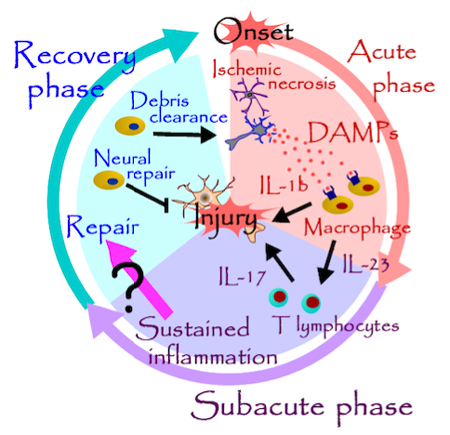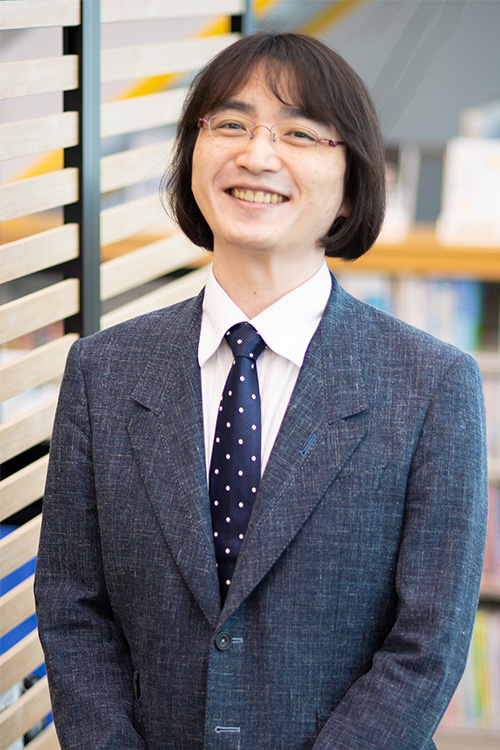
- HOME
- Stroke Renaissance Project
Stroke Renaissance Project
Clarification of molecular mechanisms underlying neural repair after stroke
Research Summary
Stroke is a common cause of severe disability and death worldwide; however, few therapeutic agents have been shown to improve the neurological deficits of stroke patients.
In this Project, we are studying the detailed molecular mechanisms underlying the neural repair after stroke and dementia. New research methods and techniques which have been recently developed in the field of immunology or neuroscience are allowing us to investigate the precise process of inflammation and repair in the injured brain after stroke and dementia. The purpose of our project is to develop a new therapeutic method for promoting the recovery of neurological function in patients with cerebrovascular diseases.
Sterile Inflammation After Ischemic Stroke

“What triggers neuralrepair after stroke?”
We have identified peroxiredoxin family proteins as DAMPs (damage associated molecular patterns) which trigger post-ischemic inflammation (Nat. Med. 2012). DAMPs induce IL-23 production from infiltrating macrophages and neutrophils, and this sustains the inflammation after ischemic stroke by promoting IL-17 production of γδT lymphocytes (Nat. Med. 2009). Cerebral post-ischemic inflammation resolves several days after the stroke onset. The clearance of DAMPs from ischemic brain through MSR1, a scavenger receptor, plays a pivotal role in the resolution of sterile inflammation after ischemic stroke (Nat. Med. 2017). Currently, we are studying how cerebral post-ischemic inflammation switches into the process of neural repair.
Selected Publications
- Nakamura K, et al. (2021) “Extracellular DJ-1 induces sterile inflammation in the ischemic brain.” PLOS. Biol. 19(5):e3000939.
- Shichita T, Ito M, Morita R, Komai K, Noguchi Y, Ooboshi H, Koshida R, Takahashi S, Kodama T, and Yoshimura A. (2017) “Mafb prevents excess inflammation after ischemic stroke by accelerating clearance of danger signals through MSR1.” Nat. Med. 23(6): 723-732.
- Shichita T, Hasegawa E, Kimura A, Morita R, Sakaguchi R, Takada I, Sekiya T, Ooboshi H, Kitazono T, Yanagawa T, Ishii T, Takahashi H, Mori S, Nishibori M, Kuroda K, Akira S, Miyake K, and Yoshimura A. (2012) “Peroxiredoxin family proteins are key initiators of post-ischemic inflammation in the brain.” Nat. Med. 18(6): 911-917.
- Shichita T, Sugiyama Y, Ooboshi H, Sugimori H, Nakagawa R, Takada I, Iwaki T, Okada Y, Iida M, Cua DJ, Iwakura Y, and Yoshimura A. (2009) “Pivotal role of cerebral interleukin-17-producing gammadelta T cells in the delayed phase of ischemic brain injury.” Nat. Med. 15(8):946-950.
